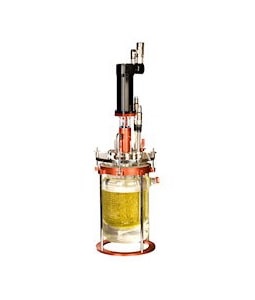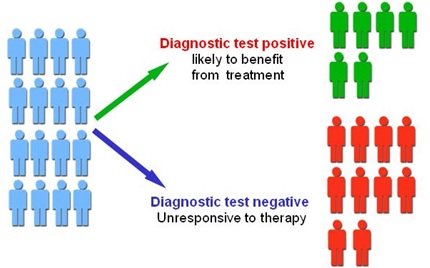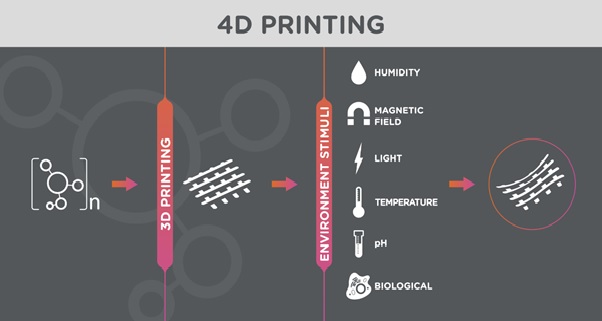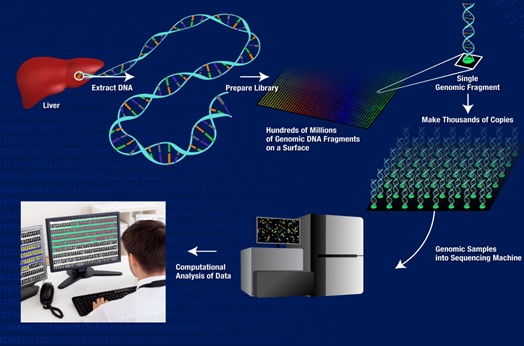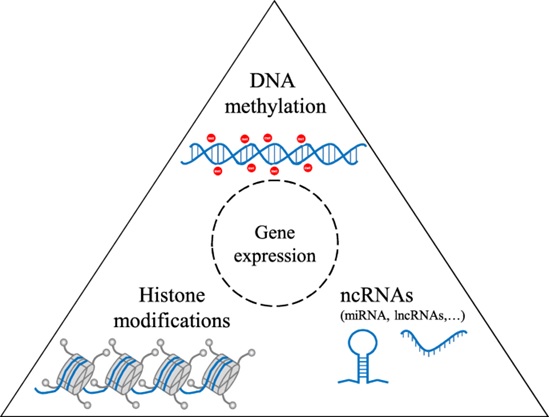Future Trends in Synthetic Biology
Synthetic biology, field of research in which the main objective is to create fully operational biological systems from the smallest constituent parts possible, including DNA, proteins, and other organic molecules. Synthetic biology incorporates many different scientific techniques and approaches. The synthetic systems created may be used to generate products ranging from ethanol and drugs to complete synthetic organisms such as complex bacteria that can digest and neutralize toxic chemicals. Ideally, these customized synthetic biological systems and organisms would be much safer and less complicated than approaches based on the manipulation of naturally occurring biological entities.[1]

Figure 1. The Future Trends in Synthetic biology
Figure 1 shows Redesigning organisms so that they produce a substance, such as a medicine or fuel, or gain a new ability, such as sensing something in the environment, are common goals of synthetic biology projects. Some examples of what scientists are producing with synthetic biology are:
- Microorganisms harnessed for bioremediation to clean pollutants from our water, soil and air.
- Rice modified to produce beta-carotene, a nutrient usually associated with carrots, that prevents vitamin A deficiency. Vitamin A deficiency causes blindness in 250,000 - 500,000 children every year and greatly increases a child's risk of death from infectious diseases.
- Yeast engineered to produce rose oil as an eco-friendly and sustainable substitute for real roses that perfumers use to make luxury scents.[2]
Advances in Synthetic Biology: The State of Play
Small Molecules: Production on Demand a Reality
Despite the lack of predictability in biology, and current technical constraints that limit data collection and analyses, we can now produce small molecules on demand using synthetic biology approaches.
Probably the most impressive examples come from the Foundry at the Broad Institute of MIT and Harvard. When the Defense Advanced Research Projects Agency (DARPA) put the MIT-Broad Institute Foundry's design capabilities to the test, its researchers were able to deliver 6 out of 10 molecules of interest to the US Department of Defense in 90 days. This “pressure test” confirms the potential of synthetic biology to address shortages of key compounds quickly.
As yet, very few small molecules in medicine are manufactured using a synthetic biology process; it remains very difficult to engineer microbes to carry out processes that Nature did not intend. This is to be expected: the performance of microbes is “good enough” from an evolutionary perspective. Microbes evolved to address the specific needs and challenges of their natural environments not those of industrial fermenters and bioreactors. Gene Transfer from one system to another may sound easy but in practice is hard work and rarely generates sufficient reward (i.e., increased yield) to justify the investment made. The application of automation and artificial intelligence (e.g., in designing and building plasmids) may help to reduce the time and cost—and improve return on investment—in the future.
Plants make alternative production platforms. Improvements in mining plant genomes and the development of effective transient expression systems have enabled large-scale production of, for example, vaccines in tobacco plants in just a few weeks. Directing the production of synthetic biological materials to plant chloroplasts also shows promise.
The photosynthetic reducing power generated in plant chloroplasts can be harnessed for the light-driven synthesis of bioactive molecules such as dhurrin, which protects plants against insects.[3]
References:
- https://www.britannica.com/science/synthetic-biology
- https://www.genome.gov/about-genomics/policy-issues/Synthetic-Biology
- https://www.frontiersin.org/articles/10.3389/fbioe.2019.00175/full
Cite this article:
Thanusri swetha J (2021), Future Trends in Synthetic Biology, AnaTechMaz, pp. 12







